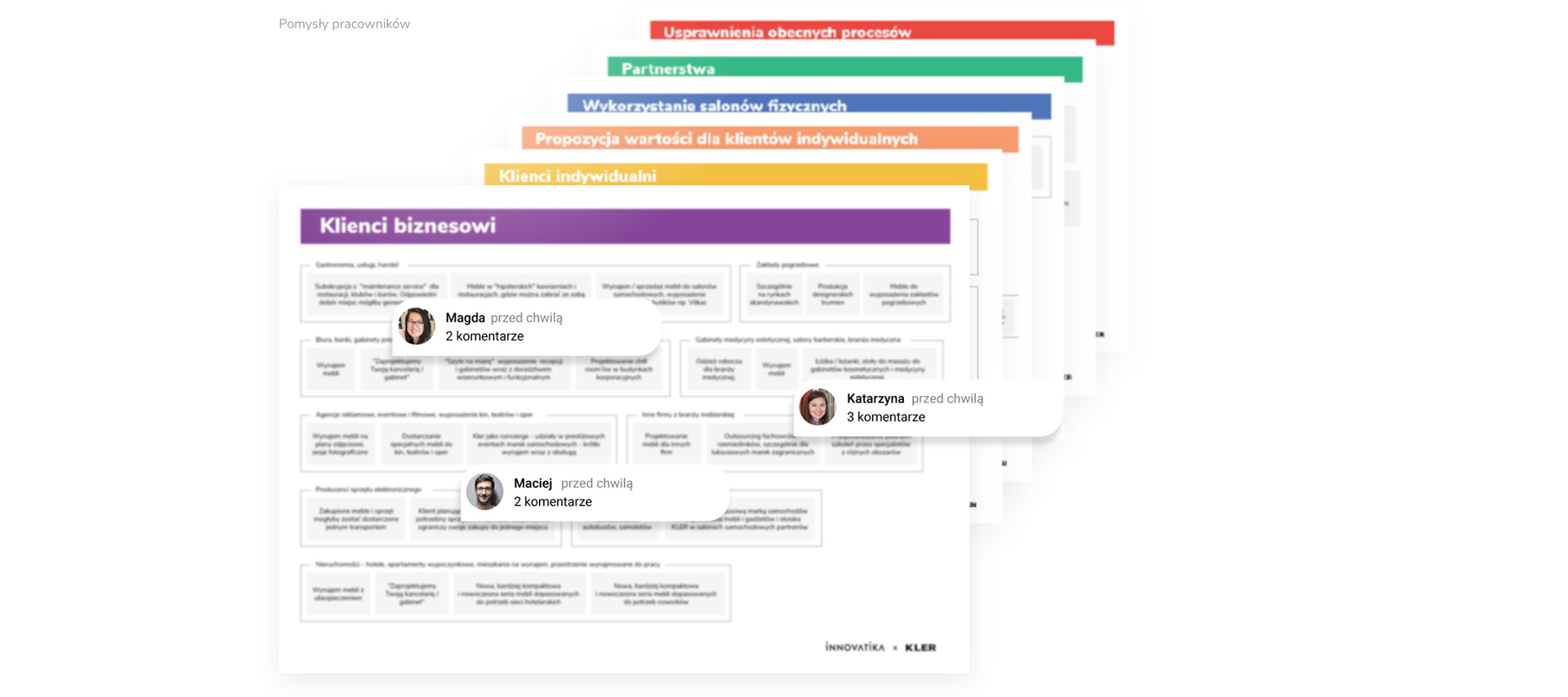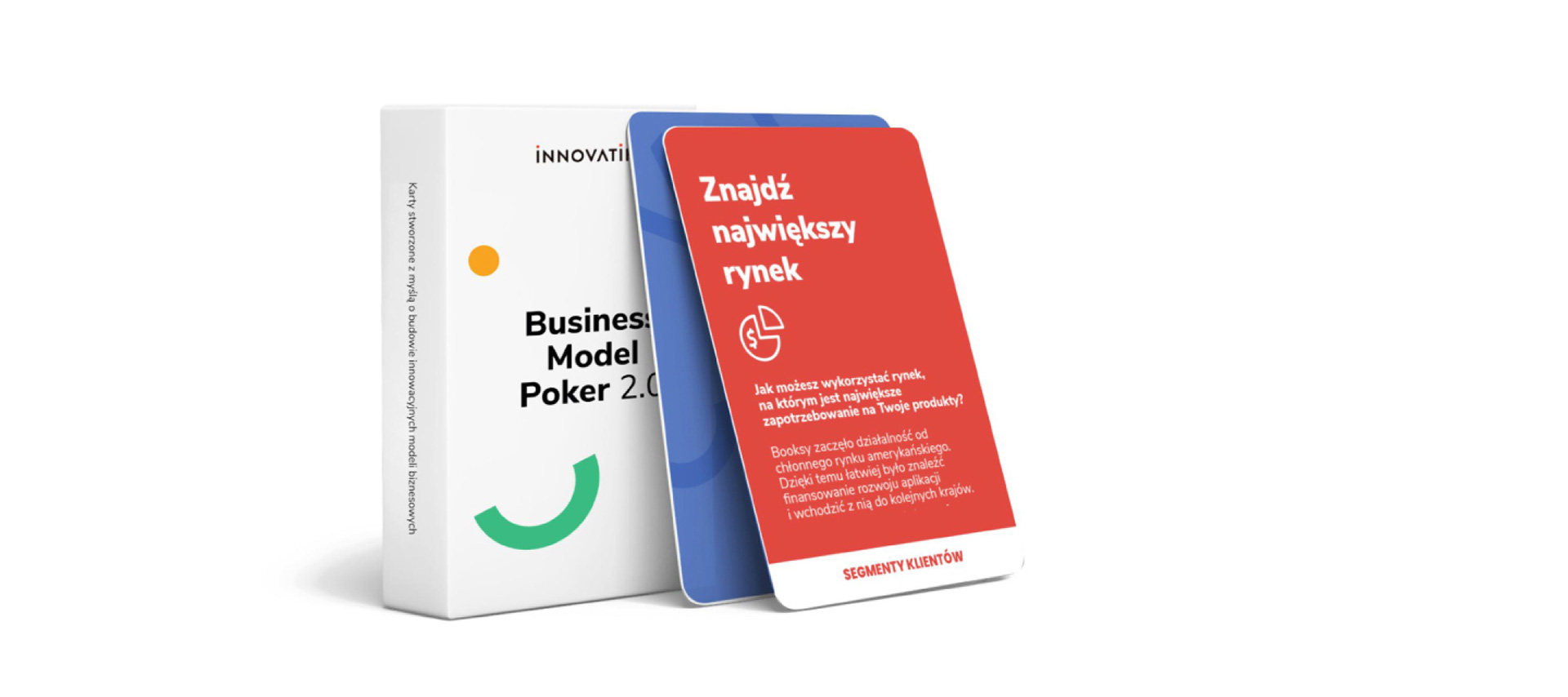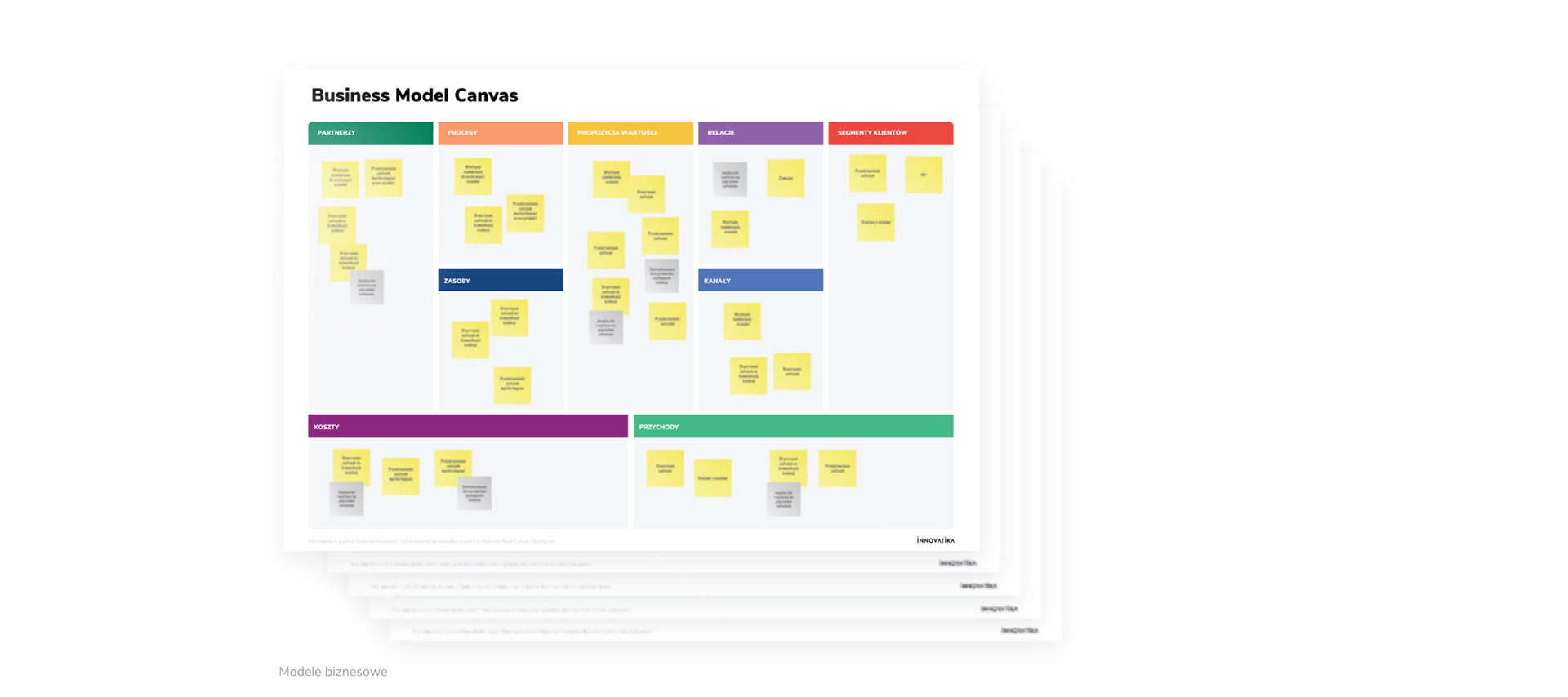Innovative business models in a traditional industry
Executive summary
Challenge
- unsatisfactory scale and business profitability
- costly "per individual order" production process
- high market saturation in Poland
- opportunity to develop digital business
Actions
- identification of areas with the greatest potential for development
- generation of 180 ideas from the employees
- compiled inspiration from a wide range of industries
- development of new business model concepts
- evaluation and selection of business concepts for further validation
Results
- a current business model with identified opportunities and threats
- strong employee involvement in the creation of new business concepts
- 9 business models created, each with an estimated financial benefit
- 6 concepts selected for further validation
- handover of one concept for rapid implementation
Service description
We have looked at the company’s strengths, complemented its weaknesses, and applied modern trends to address the needs of users and customers. We developed both concepts that complement the current business model and ones that revolutionarily deviate from it.
Over a short period of time and with a high level of commitment from the board of directors and management, we have developed concepts that have the potential to multiply the company’s profits over the next few years.
Our client
KLER S.A. has been operating in the Premium furniture market for fifty years. The company designs, manufactures, and sells prestigious collections of modular, made-to-measure furniture. It has a unique way of making high-quality upholstered furniture that can be changed to fit the needs of each customer. KLER furniture is awarded at international fairs and draws the attention of the world’s top designers.
Challenge
KLER has significantly increased its revenue volume in recent years, but both business scale and profitability have not been satisfactory. The company’s high-quality offerings are mainly aimed at wealthy individuals from the highest income group. The model of production and sales per individual customer order is a huge advantage, but, at the same time, a cost-price constraint.
Foreign markets have grown slowly because the brand isn’t well known on the international market and there isn’t a direct way to reach customers. KLER’s management decided to develop new scalable business models with the potential to multiply profits.
Our goals
Our task was to develop concepts for new business models, with their prioritisation and recommendations for further validation. We were also to engage the management team to ensure that everyone felt that the company’s development and the setting of its direction were a joint effort.

Key actions
Based on interviews with managers, as well as financial and marketing analyses, we developed conclusions and suggestions for areas of improvement in the current way of operating, and possible directions for exploring new business models. Together with the Board of Directors, we identified areas with the greatest potential for development. By involving employees, we collected 180 ideas.
At the same time, we put together a list of ideas from many different industries in key areas for development. Executives, board members, and Innovatika representatives worked on ideas and concepts. About 20 new concepts emerged from the plethora of ideas. We prepared a Reverse Income Statement for 8 of them, meaning we checked whether their financial potential was promising. Based on predefined criteria, the Board of Directors selected 6 concepts that passed for further validation.
In addition, we made recommendations about changes in several key areas of the company’s operations and collected so-called “Quick Wins,” i.e., ideas for quick implementation.

Results
As a result of the work, new scalable concepts for business models and initiatives were prepared, evaluated, and selected for in-depth analysis. The concepts covered a variety of areas, such as new outreach and sales channels, digitization of customer relationships, new customer segments, new product offerings, and a new digital service leveraging KLER’s valuable assets. We identified market and operational validation approaches for the “winning” concepts. We also identified a number of tactical actions to rapidly increase business profitability. Building strong employee engagement in concept development and readiness for implementation was also an important element.

Client benefits
Over the course of six weeks, a portfolio of innovative strategic business model concepts with potentially high commercial impact and market reach was developed. Recommendations on how to go about validating them showed the best way to reduce the risk of failure while getting the most out of the market and money. We also created an opportunity to form a good partnership with our strategic business partner quickly, and we came up with a number of ideas that brought business benefits in a short amount of time.
We found that in a very short amount of time, with great cooperation from the Innovatika team and a high level of employee involvement, our project allowed us to create coherent models for innovative business initiatives that could significantly improve business efficiency. We decided to put these models through the further market and financial validation.
Summary
It often happens that further company development in the current business model is difficult due to limitations in sales methods, or niche customer segments. It is then necessary to conduct a strategic analysis of the “AS IS” model, with the identification of opportunities and market threats to its transformation or the creation of new models.
Concepts for new business models and development directions can be created in a very short time by engaging the employees’ knowledge and using inspiration from other industries, along with Innovatika’s experience in creating new solutions. They must always be rigorously evaluated and validated afterward to ensure they are worth the investment.